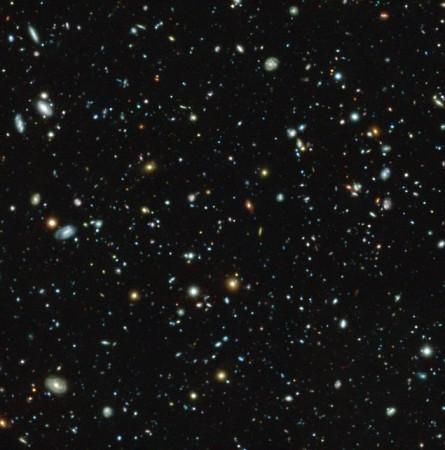
The close analysis of a vast empty patch of the sky by NASA's Hubble Space Telescope revealed 72 potential galaxies in 2004.
ALSO READ: Supermoon 2017: When and where to watch; Time, Tips and Live Stream link
Astronomers discovered these galaxies in the southern constellation Fornax — one of the 88 modern constellations located in the southern sky, partly ringed by the fabled celestial river Eridanus.
The image emerged from the Hubble Ultra-Deep Field (HUDF), and ended up unveiling over 10,000 galaxies.
The researchers used an instrument called the Multi Unit Spectroscopic Explorer (MUSE) on the European Southern Observatory (ESO)'s Very Large Telescope (VLT) in Chile, discovering 72 new galaxies while researching the 1,600 galaxies within that image.
ALSO READ: Cosmonauts discover 'extraterrestrial life' on International Space Station
MUSE is a second-generation instrument installed at the VLT at ESO. It's a spectroscopic instrument that measures light emitted throughout the space.
The 72 newly-detected galaxies are not visible to the naked eye as they shine in Lyman-Alpha line of the light spectrum.
"MUSE can do something that Hubble can't — it splits up the light from every point in the image into its component colours to create a spectrum," said Roland Bacon, the team lead, according to an ESO statement.
"This allows us to measure the distance, colours and other properties of all the galaxies we can see — including some that are invisible to Hubble itself," Bacon added.
These newly-found galaxies are defined as young and they form stars at a speedy rate, New York Post reported. The present knowledge regarding star formation can't aid us in understanding the odd make-up of these galaxies.
On November 29, 10 papers on this phenomenon were published in an issue of Astronomy & Astrophysics.
ALSO READ: Boob-shaped UFO spotted by Australian man while using Google Street View
"We learn things about these galaxies that is only possible with spectroscopy, such as chemical content and internal motions," Jarle Brinchmann, author of one of the studies, was quoted as saying by space.com.
"Not galaxy by galaxy but all at once for all the galaxies!" Brinchmann added.
ALSO READ: Sex drive boosting 'super chicken': All you need to know about Kadaknath
Galaxies that had originated in less than a billion years post Big Bang were revealed in the original Ultra-Deep Field image. This discovery is one of the biggest landmarks and it remains our deepest look at the stars.
According to team lead Bacon, futuristic optics will be used to explore the Ultra-Deep Field further.

















